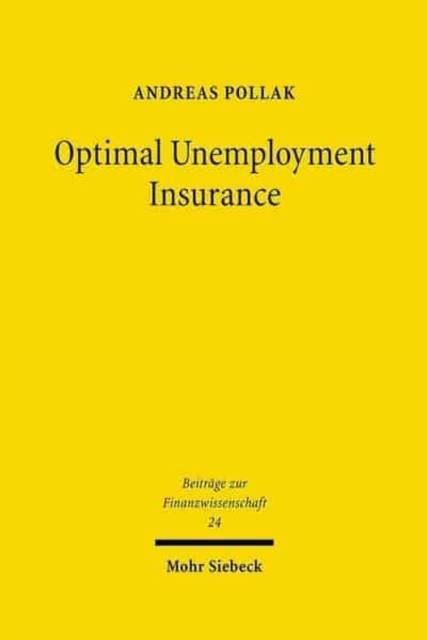
- Afhalen na 1 uur in een winkel met voorraad
- Gratis thuislevering in België vanaf € 30
- Ruim aanbod met 7 miljoen producten
- Afhalen na 1 uur in een winkel met voorraad
- Gratis thuislevering in België vanaf € 30
- Ruim aanbod met 7 miljoen producten
Zoeken
Omschrijving
Designing a good unemployment insurance scheme is a delicate matter. In a system with no or little insurance, households may be subject to a high income risk, whereas excessively generous unemployment insurance systems are known to lead to high unemployment rates and are costly both from a fiscal perspective and for society as a whole. Andreas Pollak investigates what an optimal unemployment insurance system would look like, i.e. a system that constitutes the best possible compromise between income security and incentives to work. Using theoretical economic models and complex numerical simulations, he studies the effects of benefit levels and payment durations on unemployment and welfare. As the models allow for considerable heterogeneity of households, including a history-dependent labor productivity, it is possible to analyze how certain policies affect individuals in a specific age, wealth or skill group. The most important aspect of an unemployment insurance system turns out to be the benefits paid to the long-term unemployed. If this parameter is chosen too high, a large number of households may get caught in a long spell of unemployment with little chance of finding work again. Based on the predictions in these models, the so-called Hartz IV labor market reform recently adopted in Germany should have highly favorable effects on the unemployment rates and welfare in the long run.
Specificaties
Betrokkenen
- Auteur(s):
- Uitgeverij:
Inhoud
- Aantal bladzijden:
- 178
- Taal:
- Engels
- Reeks:
- Reeksnummer:
- nr. 24
Eigenschappen
- Productcode (EAN):
- 9783161493041
- Verschijningsdatum:
- 31/12/2007
- Uitvoering:
- Hardcover
- Formaat:
- Genaaid
- Afmetingen:
- 153 mm x 229 mm
- Gewicht:
- 435 g

Alleen bij Standaard Boekhandel
+ 229 punten op je klantenkaart van Standaard Boekhandel
Beoordelingen
We publiceren alleen reviews die voldoen aan de voorwaarden voor reviews. Bekijk onze voorwaarden voor reviews.











